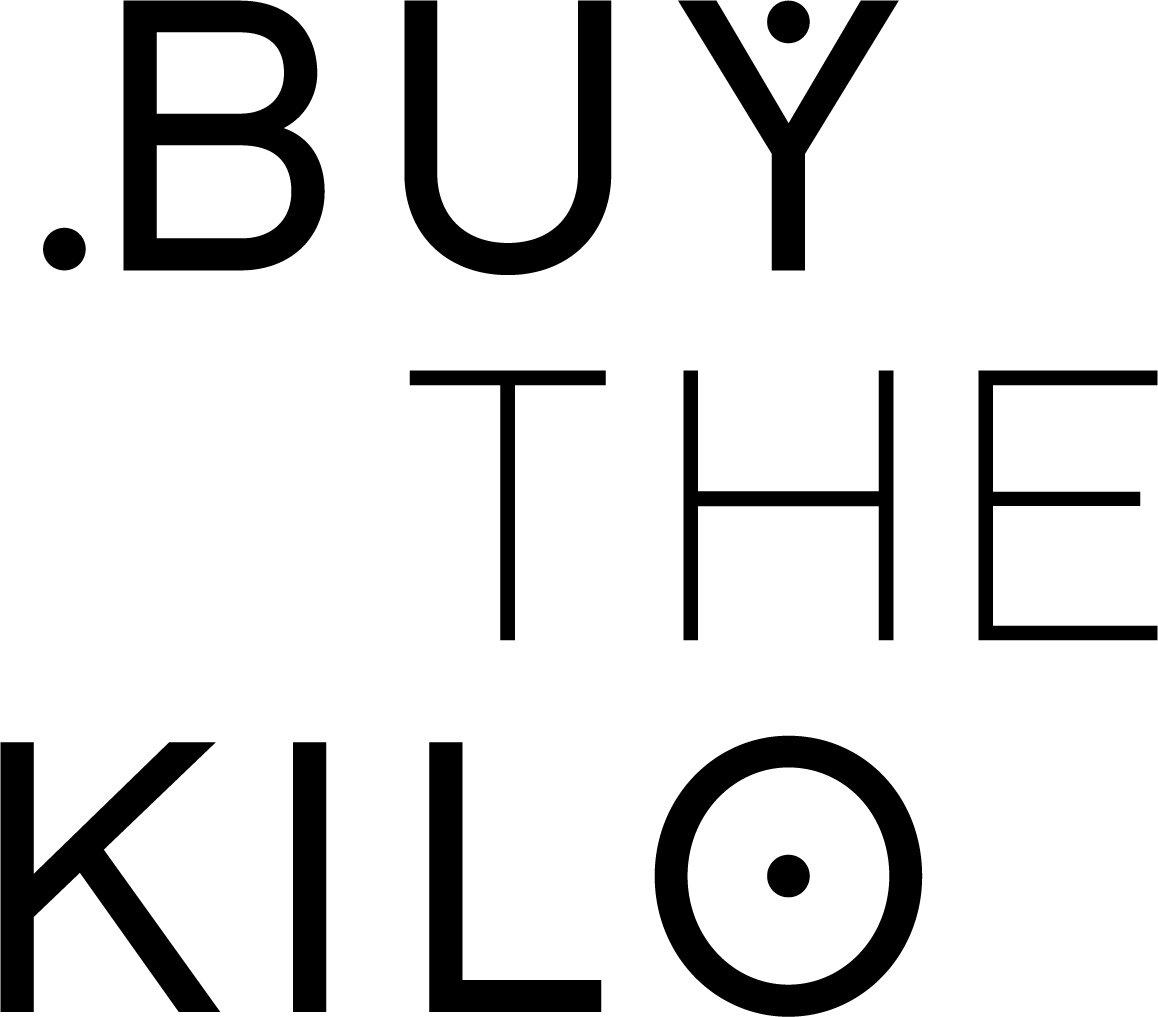2021 EXHIBITION PROGRAMME
THE LIFE OF PLASTIC
All artists submitted work under the brief ‘The Life of Plastic’.
We are delighted to share with you our programme for the year. These are difficult times and many may not be able to physically access the shop to view the art. In light of this, we will endeavour to showcase the exhibitions across our social media platforms and on our website.
JANUARY: LEANNE PEARCE
https://www.leannepearce.co.uk/
FEBRUARY: GLORIA CEBALLOS
https://gloriaceballos.com/en/home
MARCH: SIMONE WILLIAMS
https://www.facebook.com/simonewilliamsfineartist/
APRIL: CHRIS AVIS
https://www.chrisavisartist.com
MAY: NAT SEARLE
JUNE: PAMINA STEWART
https://www.paminastewart.co.uk
JULY: ALEX LEADBEATER
AUGUST: JANE WILSON & EVA JOY
https://www.instagram.com/janeclairewilson/?hl=en/
https://www.instagram.com/evajoy_art/?hl=en-gb/
SEPTEMBER: LUCY OATES
OCTOBER: COMMUNITY EXHIBITION
NOVEMBER: DIANE WATSON
https://diane-watson.com/about
DECEMBER: GABRIELA DREEZ-HOLZ

January 2021
Leanne Pearce
.
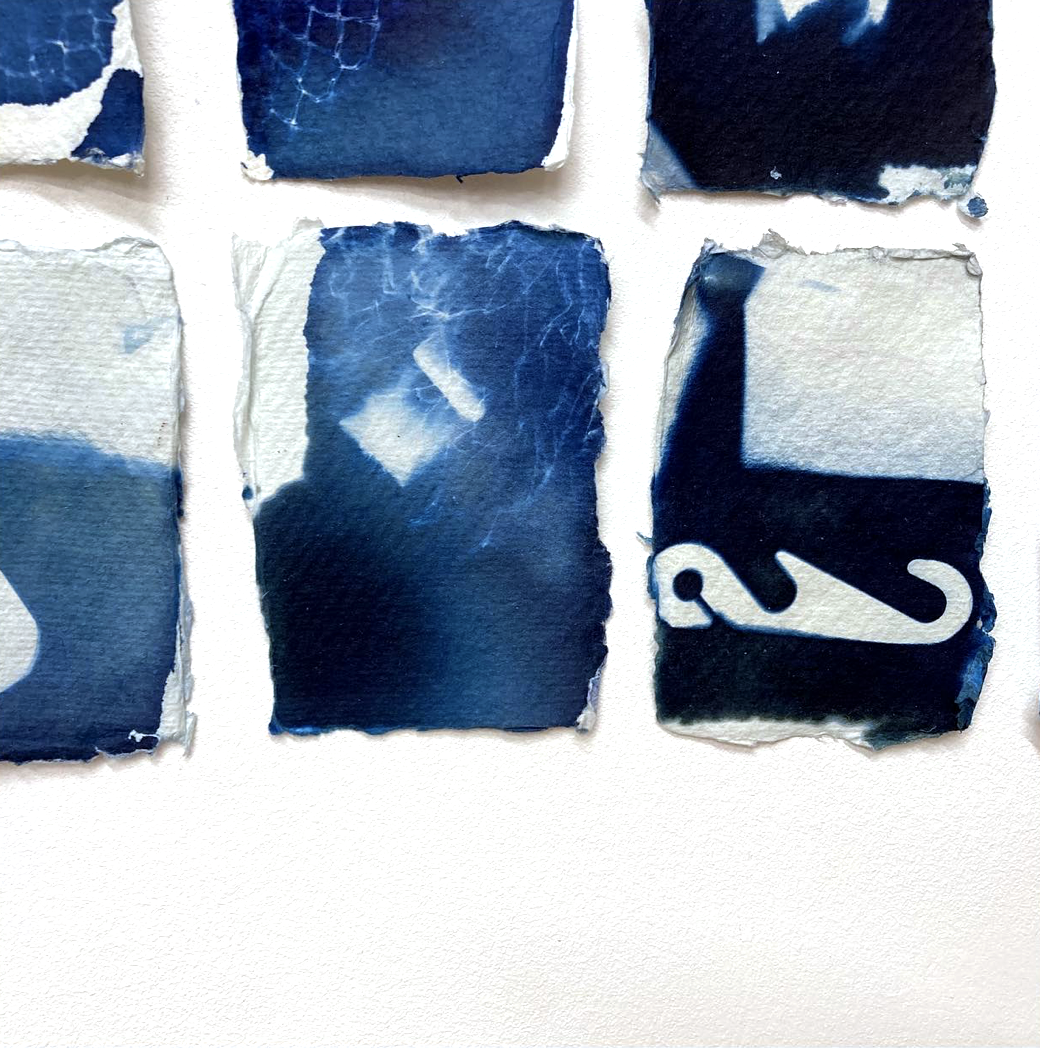
February 2021
Gloria Ceballos
These new series of cyanotype prints have been created using found materials from the river Thames, mainly plastics. The objects were placed on light-sensitised paper under the sun to create the cyanotypes.
Although often aesthetically beautiful, the works point to the concerning profusion of these plastics in the environment. Hopefully, these prints will lead us to reflect on our daily actions and that everything we throw away comes back to us (via the air we breathe, the water we drink, and the soil we grow crops and raise animals on).
This is an ongoing project but a final outcome with all prints included is on the way in the form of an artist book.
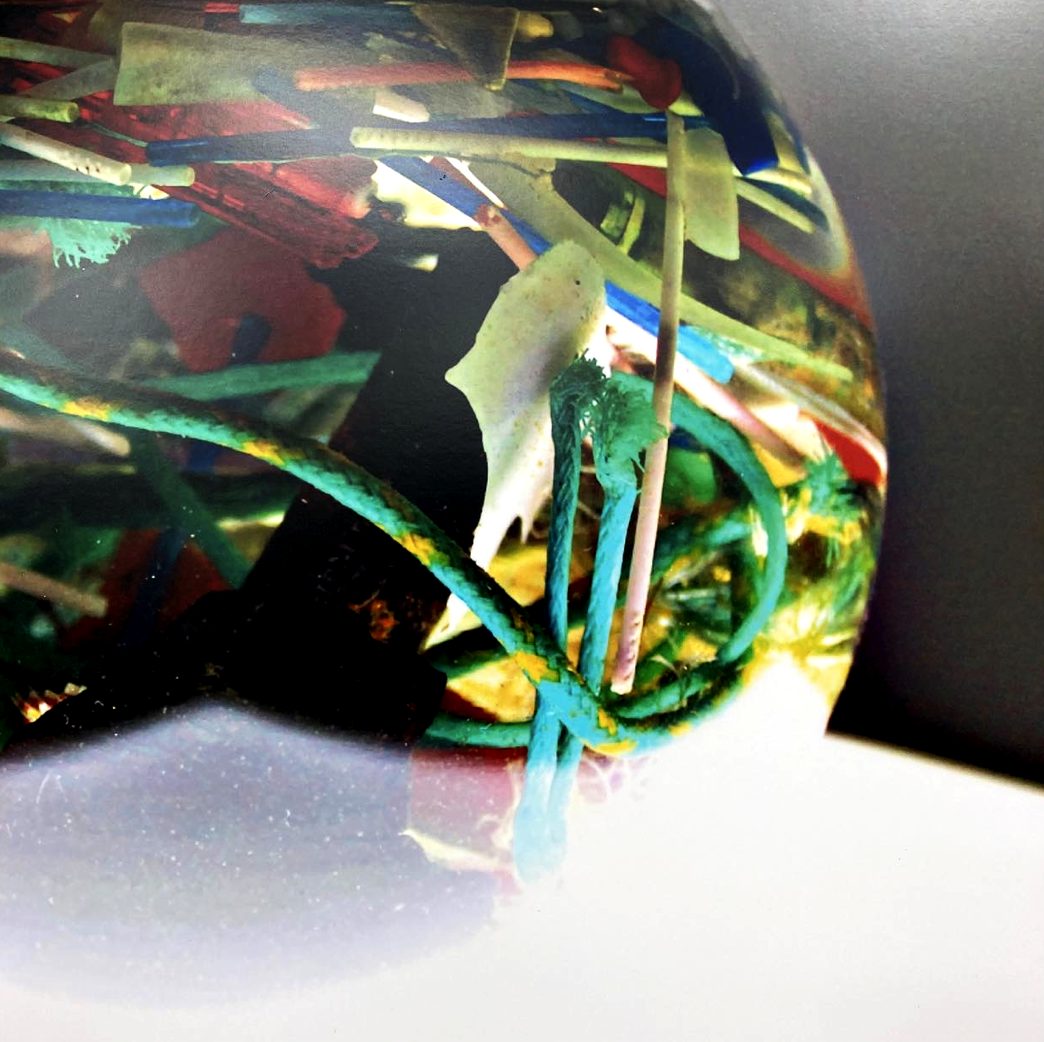
March 2021
Simone Williams
Plastic Planet is an installation created using found objects through a series of solo beach cleans over one year on the coast of the Isle of Anglesey. The work is presented in a way which challenges the viewer by presenting a polluting object in an aesthetically pleasing way.
Simone’s work is addressing environmental, ecological and sustainability issues by combining conceptual aesthetics with a pressing concern for the environment, highlighting issues of over-consumption, mass consumerism and the shocking disregard for the environment. The work raises questions regarding the unsustainable consumption of earth’s resources and the effect humanity is having on the planet.
Simone Williams is a Fine Artist based in North Wales, currently studying on the Fine Art Master’s Degree in Bangor.
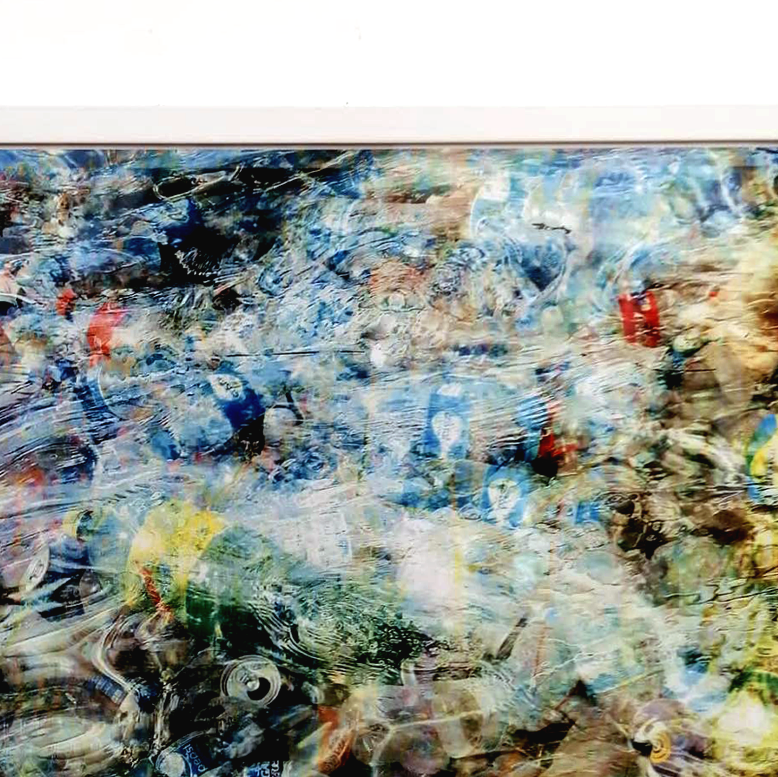
April 2021
Chris Avis
Searching beneath the surface by unpacking the layers that we keep secure is a fundamental aspect of my work.
Often nostalgic, sometimes beautifully melancholic, I make tender unsettling images drawn from my reflections of human behaviour. Using multiple layers of digital manipulation on my photographs i paint with pixels to create digital prints.
My moving image work takes these visuals through slow mesmeric animation to quietly unfold a narrative.

May 2021
Nat Searle
A multi-disciplinary artist based in Leeds, I split my practice between screen printing, commissioned street art and working as an artist-in-residence in conversation settings. I try to convey my ideas through stripped back graphics, colour and scale.
Nat has 4 beautiful pieces on display in store: Whale Shark in a Coca Cola Sea, The Pilot Fish, She Rides the Flip Flop Wave and Not Waving…

June 2021
Pamina Stewart
“Sea Guardians”
Pamina has created a series of creatures that protect and watch over the environment. The sculptures are based on wildlife that many people have taken great pleasure and solace with during the lockdowns. All are made from hard-to-recycle plastic packaging and natural renewable materials. Assembling and making new things while recycling, fires Pamina’s imagination and celebrates the exploration of these non-traditional materials.
“By using these materials to produce work, I wish to promote a sustainable art practice that is respectful of the environment”.

July 2021
Alex Leadbeater
Since moving to the coast 18 years ago, Alex has been making paintings and prints of the sea, capturing the energy and feeling of being in a wave rather than depicting the sea in paint. Recently her work aims to bring attention to the plight of the oceans and the need to stop the production of single use plastic.
A million plastic bottles a minute are bought around the world. Many will find their way to the ocean where plastic pollution kills marine mammals and turtles and over a million sea birds each year.
Plastic bags take up to 300 years to fragment but remain in the environment indefinitely and sadly 1 in 3 fish caught for human consumption now contain plastic.
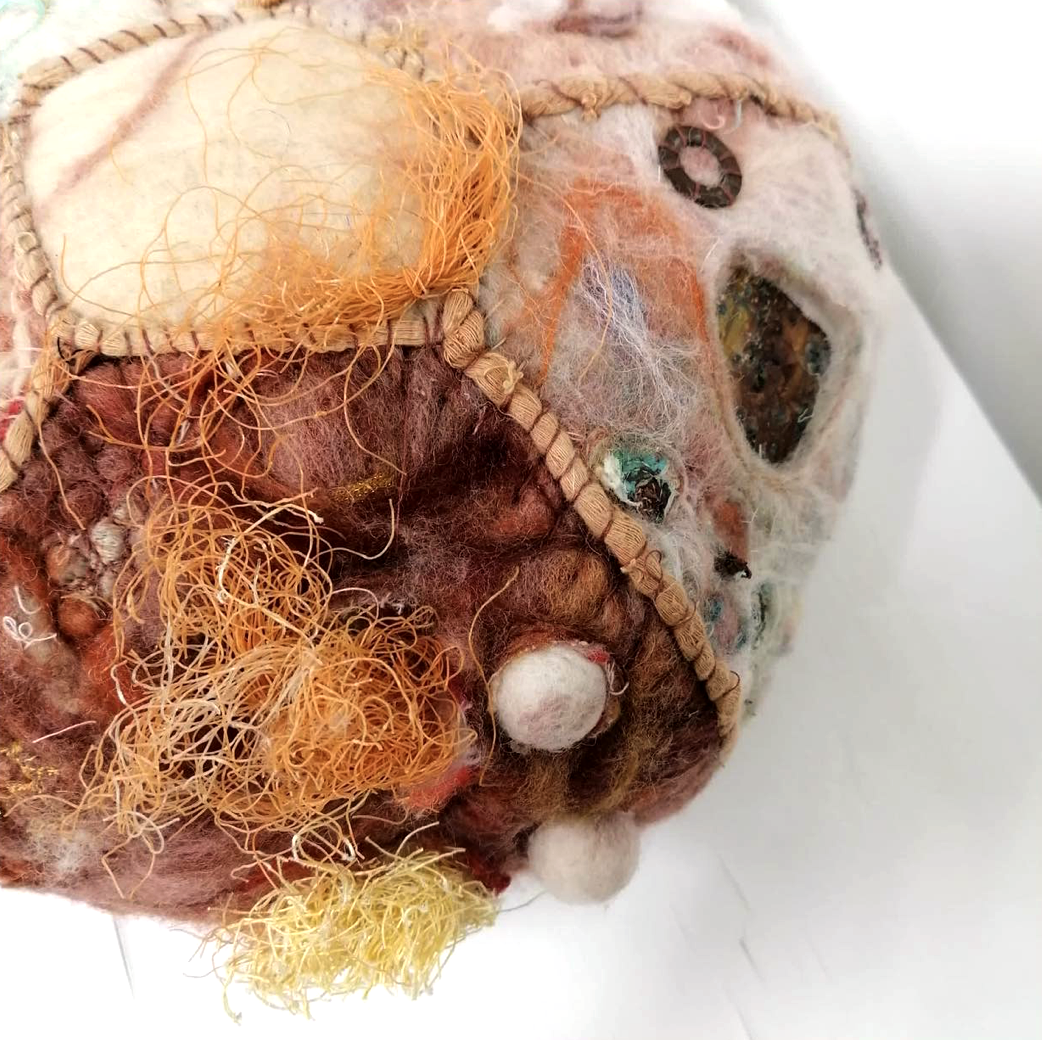
August 2021
Jane Wilson + Eva Joy
We are so lucky to have two artists’ work on display this month: Jane Claire Wilson and Eva Joy
Jane has the most beautiful Sea Urchin on display
I am a practice led artist who creates textile based artwork to share stories about places and people. I have recently graduated with an MA in Creative Practice from Leeds Art University where I have researched how creating a sense of place in a creative practice engages local audiences and makers in social, political and global discussions. I create bodies of work inspired by walking and exploring new places. This piece was created in response to the sheer volume of beach junk I found washed up on shore in The Outer Hebrides. I hope it raises awareness of problems caused by plastic pollution in our oceans.

August 2021
Jane Wilson + Eva Joy
Eva Joy – Medusas (Jellyfish) 2019
What damages our ecosystems benefits jellyfish populations; overfishing and plastic pollution kills their predators while rising sea temperatures extends their breeding seasons. Numbers are rising to the extent that jellyfish have threatened to wipe out fish populations in areas of Australia, and have temporarily paralysed nuclear power plants and factories across Scandinavia as their warms plug up water supplies. Marine scientists have arrived at an apocalyptic prognosis: “Jellyfish will be the only survivors when everything else has fallen apart.”
I made these jellyfish forms from my own plastic waste and plastic collected from beaches. I offered interested members of the public a jellyfish in return for a donation to Oceana.

September 2021
Lucy Oates
Lucy is a multidisciplinary artist, with a MA in Mixed Media Textiles from the RCA.
Lucy often fuses waste materials with traditional techniques such as printmaking and embroidery. This is an on-going investigation and is how she came to develop her own hybrid printing and joining method involving aluminium cans and plastic packaging.

October 2021
COP26 Community Exhibition
This summer we asked you (our lovely community) to help us create a banner for COP26 in Glasgow this Autumn
You created beautiful fabric circles describing your thoughts and feelings about climate crisis, which our very own textile artist and activist @jackiesewell_ has pieced together into one big collective artwork

November 2021
Diane Watson
Diane’s current work focuses on the myriad of plastic items washed up by surge tides along the North East Coast. Her collection of thousands of plastic tops, toys, bottles, lighters and other discarded items are used to create kaleidoscopic patterns.
Micro plastics have been found in beer, honey and 90% of sea salt, one in three fish contain plastic, we are eating it! Diane response is to raise awareness of plastic pollution. By 2050 there will be as much plastic in the sea as fish. Using photography, print and installation, the work challanges the viewer to inspect these objects in an unfamiliar context. These images seduce the viewer with interesting shapes and patterns, but upon closer inspection the images unravel and the objects become more familiar.
The artist’s aim is to provoke a reaction to ongoing environmental issues such as the pollution of our oceans and waterways, raising temperatures and sea levels. Although the patterns have their own aesthetic value their beauty is also repulsive.

December 2021
Gabriela Dreez-Holz
International artist Gabriela Drees-Holz creates playful objects using recycled materials, in this case aluminium coffee capsules
At every stage of production, aluminium is toxic and causes harm to our natural environment. When aluminium gets into the human body (usually via food packaging) it can cause a myriad of health issues including dementia, cancer and damage to the nervous system
Although the subject matter is sobering, the way each colourful capsule has been folded and manipulated is beautiful. This work reminds us that changing the way we produce, use and reuse materials can be fun! And that the best way to tackle climate change is through creative thinking
